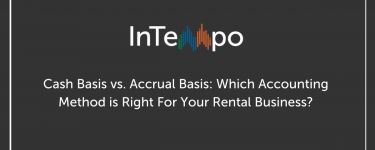Why You Should be Using Rental-Specific Accounting Software
When it comes to accounting software, you have no shortage of options. From stand-alone systems like QuickBooks to off-the-shelf ERP (Enterprise Resource Planning) systems that have built-in accounting modules, you have many potential solutions for creating invoices, posting payments, and managing your General Ledger.
However, most of these systems were built to work on an overly general level. Standard ERP accounting features are great for routine retail transactions – but not so much when you’re accounting for rental equipment. (And if you’re accounting for both rental transactions and equipment or merchandise sales? That’s a whole different ballgame.) A specialized rental ERP can make your life much easier; you can manage your unique business processes without trying to force a square peg into a round hole.
Unique Accounting Processes in the Rental Industry
Some processes, like creating and approving purchase orders, are consistent across every industry. Accounting, however, is much more complex for rental companies. Your accounting team has to deal with:
- Cycle billing
- Add-on sales and ancillary fees
- Rental accruals and forward charges
- Re-rentals
- Rental equipment depreciation
These financial processes can be difficult to complete in a broad-spectrum ERP. You need software that can handle the unique ins and outs of equipment rental accounting treatment, without making you find complicated workarounds.
For instance:
Rental Billing
A typical ERP can accommodate standard transactions, such as the one-time sale of a product. A rental transaction, however, needs to factor in quantity, rate, discount, and duration.

The duration piece can be problematic for non-rental-specific accounting software. These platforms don't have easy answers for common questions, such as:
- Does a daily cycle start at midnight, or does it start 24 hours after the customer takes possession of an asset?
- What if the customer returns the equipment early or exchanges it for another machine halfway through their contract?
- What if they’re renting 10 different machines, each with a different start and end date, but want one single invoice at the end of the month to simplify their own Accounts Payable efforts?
- What if you charge flat-rate damage waivers on certain categories and classes of equipment, and percentage-based damage waivers on other rental assets?
- Can you choose not to bill customers for equipment they have out on rent but aren't actively using on federal holidays?
These are the sort of bookkeeping exceptions that are almost impossible to accommodate in a “one size fits all” ERP, but easy to execute in specialized rental billing and invoicing software.
Re-Rentals
When you re-rent equipment, accounting for the cost of an asset that you’ve neither leased nor purchased can get complicated. A generic ERP system may need multiple purchase order amendments as a workaround, or you may need to create multiple Goods Received Notes so you can post multiple invoices.
However, accounting software for your rental business can easily accommodate re-rentals. Some solutions even let you control the margin between your re-rent purchase order and the rental contract you deliver to the customer. This is a much easier way to account for (and track revenues from) owned and re-rented equipment.
Equipment Depreciation Across Multiple Rental Branches
General accounting software can do a decent job with standard depreciation. However, when your rental company shares equipment across multiple locations – each one accounting for a portion of that month’s depreciation cost – accurately tracking equipment depreciation becomes more complicated. As your company grows, it becomes more critical to use accounting software that can calculate depreciation across multiple branches.
Reporting on Recurring Revenue
On a standard transaction, you sell an item and collect the revenue; that’s it. For a rental, however, you capture revenue for the same asset over and over and over. That revenue may need to be recognized on a daily basis. However, if the customer returns the equipment before the end of the contract period, you may need to recognize incremental revenue on the return date as well. This can be hard to accommodate in standard accounting software – especially if it doesn’t include asset numbers as an out-of-the-box data field. This is another place where specialized equipment rental accounting software can make financial operations much easier.
Running Credit Checks
When you create a contract for a three-month rental, you don’t necessarily need to pass through the value of all three months to the customer’s credit check. One month should be sufficient. (After all, if you don’t get paid when the first month’s payment is due, you can go recover the machine from the customer's jobsite.) Similarly, when an existing customer asks to add an additional machine to their existing rental contract, their current credit limit isn’t just affected by what’s currently due for payment; it also needs to consider what’s currently out on rent but not yet billed. An ERP system that’s designed for manufacturers, distributors, or retailers just can’t handle this the same way equipment rental finance software can.
Accounting Software that’s Built By Rental Professionals, For Rental Professionals
InTempo Enterprise includes fully integrated accounting software that’s purpose-built for the rental industry. Our solutions accommodate the unique billing, depreciation, re-rental, and reporting processes that you face on a day-in, day-out basis. From equipment rental revenue recognition to rental inventory depreciation to managing financials by branch, we make A/R, A/P, and G/L management easy.
Learn more about our accounting software for equipment rental companies or request a demo here.
 Faith Kubicki
Faith Kubicki

